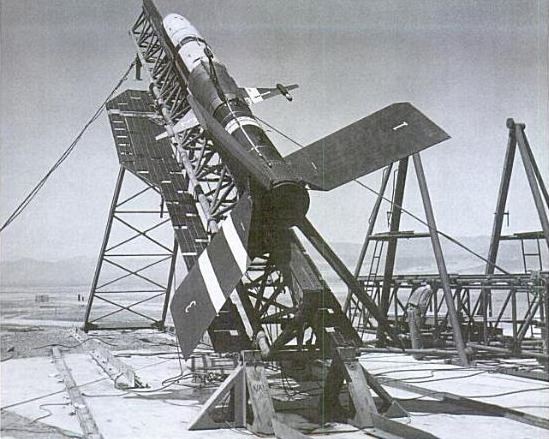Type Air-to-air missile In service 1948-1953 Designed 1945-1946 | Place of origin United States | |
 | ||
The AAM-N-5 Meteor was an early American air-to-air missile, developed by the Massachusetts Institute of Technology and Bell Aircraft for the United States Navy. Designed for launch from carrier-based aircraft, the program proceeded to the flight testing stage before being cancelled.
Development
Development of the Meteor was loosely defined at first, with both surface-to-air and air-to-air missiles being studied by the Massachusetts Institute of Technology under a contract awarded in November 1945 by the U.S. Navy's Bureau of Ordnance; the decision was made to construct the air-to-air version for testing, with construction of the airframe being assigned to Bell Aircraft.
As built, the AAM-N-5 Meteor was a two-stage missile, utilizing semi-active radar homing; the first stage consisted of a solid-fueled rocket booster, with the main sustainer stage utilizing liquid fuels. It had a range of 25 miles (40 km), and reached speeds of over Mach 2, with some sources claiming a top speed of Mach 3. Control was provided by cruciform fins.
Flight testing of the AAM-N-5 began in July 1948 at the Naval Ordnance Test Station, with Douglas JD-1 Invader utility aircraft acting as the launching platform. Starting in 1951, test launches were conducted using Douglas F3D Skyknight nightfighters as carrier aircraft; fifteen launches were also made from ground launchers at NOTS' China Lake range. However, in 1953 the program was cancelled, as better missiles were becoming available.
An advanced version of Meteor, Meteor II, was assigned to be built by United Aircraft; it was intended to have a solid-fueled booster rocket with a ramjet sustainer stage, but was not built.
